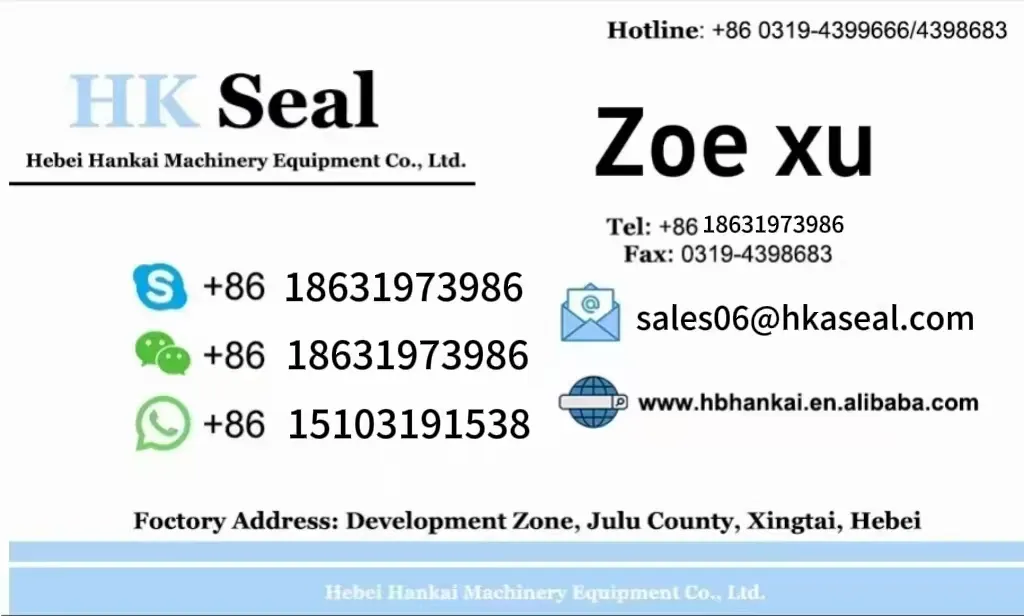נוב . 09, 2024 11:27 Back to list
Choosing the Right Material for Hydraulic Cylinder Seal Kits for Optimal Performance
Understanding Hydraulic Cylinder Seal Kit Materials
Hydraulic systems are pivotal in various industrial applications, from manufacturing to construction. At the heart of these systems is the hydraulic cylinder, which relies on seals to function efficiently and reliably. The materials used in hydraulic cylinder seal kits play a crucial role in determining the performance and longevity of these systems. This article aims to explore the different materials commonly used in hydraulic cylinder seal kits, their properties, and their applications.
Common Seal Materials
1. Nitrile Rubber (NBR) Nitrile rubber is one of the most widely used materials for hydraulic cylinder seals. This synthetic rubber offers excellent resistance to petroleum-based oils and fuels, making it suitable for a range of hydraulic fluids. NBR seals exhibit good mechanical strength, elasticity, and wear resistance. However, they can be less effective in high-temperature applications, typically losing their effectiveness above 100°C (212°F).
2. Polyurethane (PU) Polyurethane seals are known for their outstanding durability and resistance to abrasion. They can withstand higher pressure and temperatures than NBR, making them ideal for more demanding hydraulic applications. PU seals are particularly effective in applications where dynamic movements are prevalent. However, they generally have lower oil resistance than NBR, which can be a consideration when selecting the right seal material.
3. Fluoroelastomer (FKM) Fluoroelastomers, such as Viton, are engineered to operate in extreme conditions. They exhibit excellent chemical resistance, making them suitable for hydraulic fluids that may contain aggressive chemicals or high temperatures, sometimes exceeding 200°C (392°F). Their resilience to environmental factors means they are often used in aerospace and automotive applications. However, they come at a higher price point, which may not be suitable for all budgets.
4. Polyacrylate (ACM) Polyacrylate seals provide impressive resistance to heat and aging, particularly in lubricants and oils. Although they do not have the same level of hydraulic fluid resistance as NBR, ACM seals are exceptionally durable under high-temperature conditions. They are often used in applications requiring prolonged exposure to high temperatures without degrading.
5. PTFE (Polytetrafluoroethylene) PTFE seals, commonly recognized by the brand name Teflon, offer remarkable chemical resistance and low friction characteristics. These seals are suitable for hydraulic applications where other materials may fail due to aggressive chemical exposure. While PTFE seals provide exceptional longevity, they can be prone to cold flow phenomena, which may lead to leakage if not designed properly with appropriate energizers or back-up seals.
hydraulic cylinder seal kit material

Considerations for Selecting Seal Materials
Choosing the right seal material for hydraulic cylinder applications involves considering several factors
- Application Environment Assess the working conditions, including temperature, pressure, and the presence of chemicals or contaminants. - Fluid Compatibility Ensure the selected seal material is compatible with the type of hydraulic fluid being used. Different materials have varied resistance to oils, water, and other fluids.
- Mechanical Requirements Evaluate the mechanical properties needed for the application, including hardness, elasticity, and wear resistance.
- Longevity and Cost Balance performance needs with budget constraints. While high-performance materials may offer greater longevity, they can also increase overall system costs.
Conclusion
The choice of materials for hydraulic cylinder seal kits is critical for ensuring operational efficiency and reliability. Understanding the properties of various seal materials, such as nitrile rubber, polyurethane, fluoroelastomers, polyacrylate, and PTFE, is essential for making informed decisions tailored to specific applications. By considering factors like working conditions, fluid compatibility, and mechanical requirements, businesses can select the optimal seal materials to enhance the performance and lifespan of hydraulic systems.
-
TCN Oil Seal Metal Ring Reinforcement for Heavy Machinery
NewsJul.25,2025
-
Rotary Lip Seal Spring-Loaded Design for High-Speed Applications
NewsJul.25,2025
-
Hydraulic Cylinder Seals Polyurethane Material for High-Impact Jobs
NewsJul.25,2025
-
High Pressure Oil Seal Polyurethane Coating Wear Resistance
NewsJul.25,2025
-
Dust Proof Seal Double Lip Design for Construction Equipment
NewsJul.25,2025
-
Hub Seal Polyurethane Wear Resistance in Agricultural Vehicles
NewsJul.25,2025
-
The Trans-formative Journey of Wheel Hub Oil Seals
NewsJun.06,2025
Products categories
















